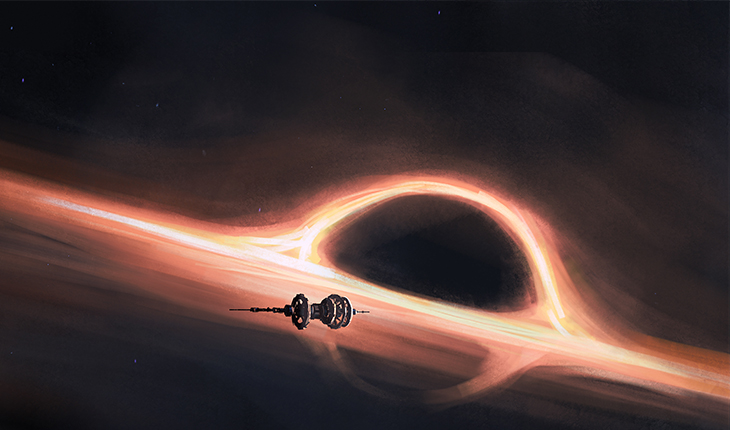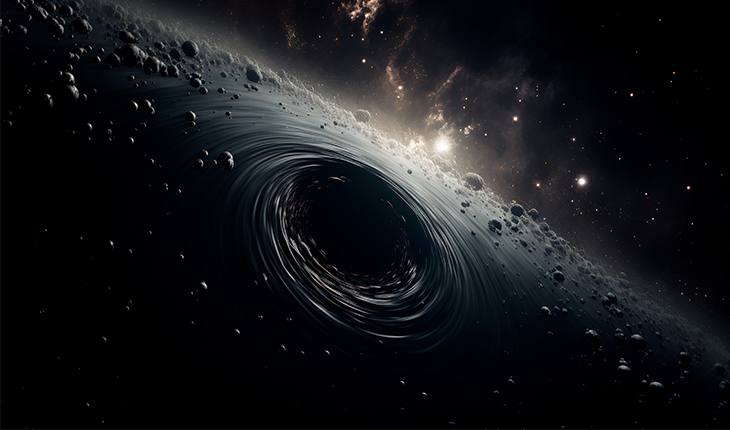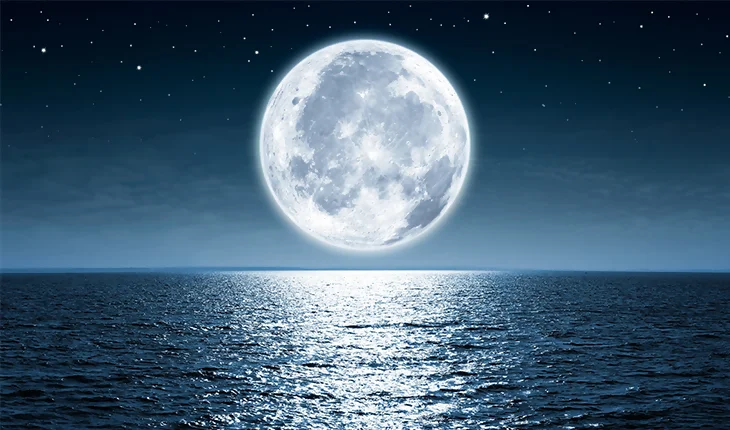Black holes are mysterious and fascinating objects in space, but it’s essential to clarify that they don’t function like cosmic vacuum cleaners that suck everything in their vicinity. Instead, they exert a gravitational pull like any other massive object in space.
Actually black holes are simply defined as areas of spacetime where gravity is so strong that nothing can escape it, not even light. The singularity, or point of infinite density, at the center of a black hole, is believed to be the irresistible destination of any object that passes through the event horizon, a boundary around the black hole.
Where do black holes lead?
You are about to jump into a black hole; that’s where you are. Should you manage to survive in spite of all the odds, what might be in store for you? Where would you end up, and what enticing stories could you tell if you were able to make your way back?
Professor Richard Massey says, “Who knows?” in response to all of these inquiries. Massey is a Royal Society research fellow at Durham University’s Institute for Computational Cosmology, and he is well aware of the complexity of the black hole mystery.
“They’d be ripped to pieces by the enormous gravity, so I doubt anyone falling through would get anywhere.”
That response may seem painful and disappointing, but that is to be expected. Black holes are known to arise from the death of a massive star that leaves behind a small, dense remnant core ever since Albert Einstein’s general theory of relativity was thought to have predicted black holes by tying spacetime with the action of gravity. Gravity would overwhelm to the point where it collapses into a single point, or singularity, which is thought to be the infinitely dense core of the black hole, assuming that its mass exceeds roughly three times that of the Sun.
Suggested content:
Why do black holes exist
Black holes exist as a consequence of the gravitational collapse of massive stars. The life cycle of a star is determined by the balance between the outward pressure from nuclear fusion occurring in its core and the force of gravity pulling the star’s mass inward. When massive stars exhaust their nuclear fuel, they lose the energy needed to counteract the force of gravity, leading to a collapse.
The process leading to the formation of a black hole generally unfolds as follows:
Stellar Evolution: Several times the mass of our Sun, massive stars undergo different phases of nuclear fusion, burning progressively heavier elements in their cores. In order to keep the star from collapsing under the force of gravity, this process generates outward pressure.
Nuclear Fusion Exhaustion: As a massive star exhausts its nuclear fuel, it loses the energy generated by fusion. Without this outward pressure to counteract gravity, the star’s core contracts under its gravitational pull.
Collapse and Supernova: The spectacular phenomenon known as a supernova can result from the core collapsing. The star’s core continues to contract while its outer layers are ejected into space. The fate of the collapsing star is largely dependent on the mass of the remaining core.
Formation of a Black Hole: Black holes form when the remaining core mass exceeds a critical value, which is roughly between 2.5 and 3 solar masses. At this point, the gravitational pull becomes so strong that it cancels out all other known forces. An event horizon encircling the singularity—a point of infinite density from which nothing, not even light, can escape—is formed when the core collapses.
Where do black holes take people?
In fact, there is so much gravity that not even light can escape it. You’re going to go downhill with it. In the direction of the black hole’s center, you will eventually get mashed into a single piece and merge with the singularity, disappearing from the cosmos forever. There’s no way you’ll survive that.

Maybe Black holes go nowhere
Physicists James Sully, Donald Marolf, Joseph Polchinski, and Ahmed Almheiri, however, continued to think Hawking might have been onto something. They contributed to the development of the black hole firewall hypothesis, also known as the AMPS firewall. Quantum physicists’ calculations suggested that it would be possible to transform the event horizon into a massive wall of fire, with anything in its path burning instantly. Since nothing could ever enter a black hole, they are thought to be completely useless.
But Einstein’s general theory of relativity is broken by this. Since an object would be in free fall and would not experience the extreme effects of gravity according to the equivalency principle, someone crossing the event horizon shouldn’t really experience any great hardship. It might adhere to the physical laws that apply to other parts of the universe. However, even if it did not contradict Einstein’s theory, it would cast doubt on quantum field theory or imply that information could be lost.
Will black holes hit Earth?
In the vast expanse of the cosmos, the notion of a black hole colliding with Earth sparks both curiosity and concern. Fortunately, the chances of a black hole directly targeting our planet are infinitesimally low. Black holes typically form from the collapse of massive stars, and their occurrence is scattered across the cosmos, making a direct collision with Earth highly improbable.
Furthermore, vast cosmic buffers are created by the gravitational dynamics of our solar system and the vast distances between celestial bodies. Due to the laws of celestial mechanics, Earth’s orbit around the Sun protects us from the gravitational pull of far-off black holes. Though they may excite our curiosity, the likelihood of a black hole endangering Earth is still incredibly remote. Earth is firmly positioned within the cosmic choreography of the celestial bodies’ ongoing dance.
Source: space.com



